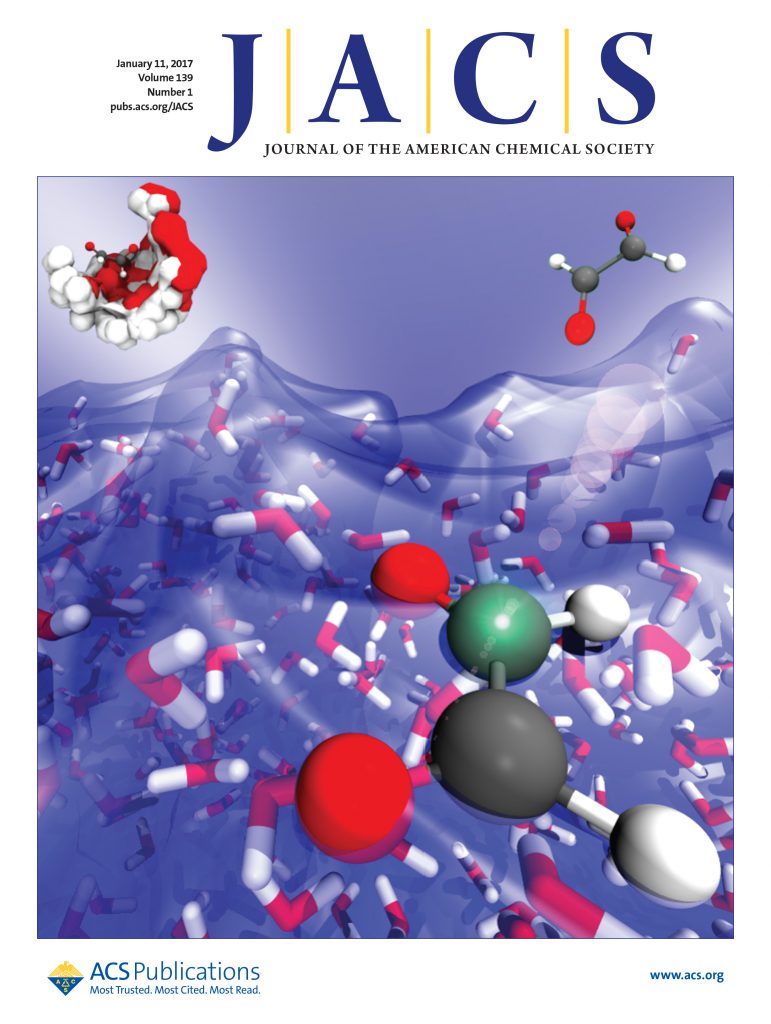Field-Induced Interlayer Ion Migration and Electronic Coupling Unlock Ferroelectricity in Centrosymmetric AgInP2Se6 Crystals.
IF 14.4
1区 化学
Q1 CHEMISTRY, MULTIDISCIPLINARY
引用次数: 0
Abstract
The research on two-dimensional (2D) van der Waals (vdW) ferroelectric materials has garnered significant interest due to their novel underlying chemical mechanisms and promising application potential. However, prior studies were largely limited to noncentrosymmetric materials under traditional ferroelectric concepts, hampering the development of vdW ferroelectric systems. Here, we report a centrosymmetric ionic-electronic-coupled vdW ferroelectric semiconductor, AgInP2Se6, where polarization switching arises from electric field-driven interlayer Ag+ migration. Combining density functional theory calculations and in situ second-harmonic generation spectroscopy confirms that at room temperature, the ionic migration barrier prevents spontaneous relaxation, stabilizing the nonvolatile polarization. This discovery expands the landscape of ferroelectric materials beyond symmetry constraints, unlocking new possibilities for low-power, nonvolatile memory and in-memory computing architectures. Using AIPSe as the channel in a ferroelectric semiconductor transistor, we achieve a 69% memory window, an on/off ratio exceeding 106, and exceptional endurance and retention. This study establishes a chemical strategy for modulating polar properties in materials, unveiling unprecedented chemical insights into the ferroelectric regulation of vdW crystals.场致层间离子迁移和电子耦合解锁中心对称AgInP2Se6晶体中的铁电性。
二维范德华(vdW)铁电材料由于其新颖的潜在化学机制和广阔的应用前景而引起了人们的极大兴趣。然而,以往的研究大多局限于传统铁电概念下的非中心对称材料,阻碍了vdW铁电系统的发展。在这里,我们报道了一种中心对称离子-电子耦合的vdW铁电半导体AgInP2Se6,其中极化开关是由电场驱动的层间Ag+迁移引起的。结合密度泛函理论计算和原位二次谐波产生光谱证实,在室温下,离子迁移屏障阻止自发弛豫,稳定了非挥发性极化。这一发现扩展了铁电材料的领域,超越了对称限制,为低功耗、非易失性存储器和内存计算架构打开了新的可能性。使用AIPSe作为铁电半导体晶体管的通道,我们实现了69%的存储窗口,超过106的开/关比,以及出色的耐用性和保持性。本研究建立了一种调节材料极性特性的化学策略,揭示了对vdW晶体铁电调节的前所未有的化学见解。
本文章由计算机程序翻译,如有差异,请以英文原文为准。
求助全文
约1分钟内获得全文
求助全文
来源期刊
CiteScore
24.40
自引率
6.00%
发文量
2398
审稿时长
1.6 months
期刊介绍:
The flagship journal of the American Chemical Society, known as the Journal of the American Chemical Society (JACS), has been a prestigious publication since its establishment in 1879. It holds a preeminent position in the field of chemistry and related interdisciplinary sciences. JACS is committed to disseminating cutting-edge research papers, covering a wide range of topics, and encompasses approximately 19,000 pages of Articles, Communications, and Perspectives annually. With a weekly publication frequency, JACS plays a vital role in advancing the field of chemistry by providing essential research.

 求助内容:
求助内容: 应助结果提醒方式:
应助结果提醒方式:


